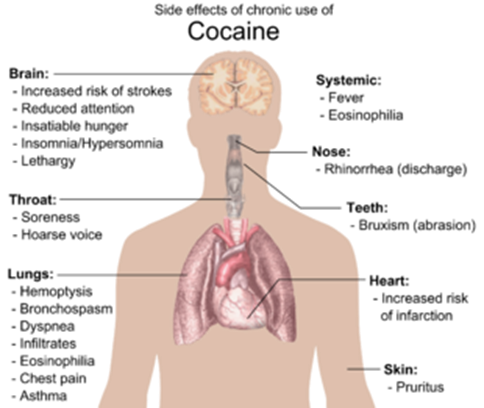A woman pregnant with twins comes to the clinic for an evaluation. While assessing the client, the nurse would be especially alert for signs and symptoms for which potential problem?
oligohydramnios
preeclampsia
chorioamnionitis
post-term labor
The Correct Answer is B
A. Oligohydramnios:
Oligohydramnios refers to a condition where there is too little amniotic fluid surrounding the fetus in the womb. It can be concerning because amniotic fluid plays a crucial role in protecting and cushioning the fetus, aiding in lung development, and preventing compression of the umbilical cord. While oligohydramnios can be a complication in pregnancy, it's not necessarily more common or specific to twin pregnancies compared to singleton pregnancies.
B. Preeclampsia:
Preeclampsia is a serious pregnancy complication characterized by high blood pressure and signs of damage to other organ systems, such as the liver and kidneys. It usually develops after 20 weeks of pregnancy and can lead to serious complications for both the mother and the babies if not managed properly. Multiple pregnancies, including twins, are considered a risk factor for developing preeclampsia. Therefore, pregnant women carrying twins require close monitoring for signs and symptoms of preeclampsia.
C. Chorioamnionitis:
Chorioamnionitis is an infection of the fetal membranes (chorion and amnion) and amniotic fluid. It typically occurs due to bacterial infection ascending from the vagina into the uterus, often during prolonged labor or rupture of membranes. While chorioamnionitis is a concern in pregnancy, it's not necessarily more common in twin pregnancies compared to singleton pregnancies.
D. Post-term labor:
Post-term labor refers to labor that begins after 42 weeks of gestation. Prolonged pregnancy beyond the due date can increase the risks of complications for both the mother and the baby, including fetal distress, macrosomia (large birth weight), and meconium aspiration. Post-term labor can occur in both singleton and multiple pregnancies, but it's not specifically more associated with twin pregnancies.

Nursing Test Bank
Naxlex Comprehensive Predictor Exams
Related Questions
Correct Answer is C
Explanation
A. Have the technician come back later on:
This option suggests delaying the blood draw until a later time when the IV line is removed or after the infusion is completed. While this may seem like a reasonable approach to avoid interfering with the IV line, it could lead to unnecessary delays in obtaining essential laboratory test results.
B. Notify the surgeon to obtain the specimen via a cut-down procedure:
This option involves a more invasive procedure, called a cut-down, which is typically reserved for situations where peripheral venous access is challenging or impossible. It involves making an incision to expose a vein for direct cannulation. This approach is not warranted in this scenario, where obtaining blood from the opposite arm is a standard and less invasive practice.
C. Tell the technician to obtain the specimen from the client's left arm:
This option is the most appropriate response. It instructs the technician to draw blood from the client's left arm, which is free from the IV line. Drawing blood from the opposite arm minimizes the risk of complications associated with interfering with the IV infusion.
D. Stop the technician immediately:
While stopping the technician immediately may prevent them from proceeding with the incorrect approach, it lacks specific guidance on how to proceed correctly. It's essential to provide clear instructions to the technician to draw blood from the opposite arm rather than simply halting the procedure without further direction.
Correct Answer is D
Explanation
A. Alcohol:
Alcohol consumption during pregnancy can lead to a range of adverse effects on the fetus, collectively known as fetal alcohol spectrum disorders (FASDs). However, the symptoms described in the scenario—tachycardia, hypertension, and evidence suggesting vasoconstriction—are not typical of alcohol use. While alcohol can lead to hypertension in chronic heavy drinkers, it is not commonly associated with tachycardia and vasoconstriction in the same way that stimulant drugs like cocaine are.
B. Heroin:
Heroin is an opioid drug that depresses the central nervous system, leading to effects such as respiratory depression, sedation, and decreased heart rate. While heroin use during pregnancy can have serious consequences for both the mother and the fetus, including neonatal withdrawal syndrome (neonatal abstinence syndrome), it is not typically associated with tachycardia, hypertension, and vasoconstriction. Therefore, heroin is less likely to be the substance causing the symptoms described in the scenario.
C. Marijuana:
Marijuana use during pregnancy has been associated with various adverse outcomes, including low birth weight and neurodevelopmental issues in children. However, the symptoms described—tachycardia, hypertension, and evidence suggesting vasoconstriction—are not typical of marijuana use. Marijuana is more commonly associated with effects such as relaxation, increased heart rate (tachycardia), and vasodilation (not vasoconstriction). Therefore, marijuana is less likely to be the substance causing the symptoms described in the scenario.
D. Cocaine:
Cocaine is a potent stimulant drug that acts on the central nervous system and cardiovascular system, leading to effects such as tachycardia, hypertension, and vasoconstriction. These symptoms are consistent with acute cocaine intoxication. Cocaine use during pregnancy can have serious adverse effects on both the mother and the fetus, including increased risk of miscarriage, preterm labor, placental abruption, and fetal growth restriction. Therefore, given the symptoms described in the scenario, cocaine is the substance that the nurse would question the woman about.

Whether you are a student looking to ace your exams or a practicing nurse seeking to enhance your expertise , our nursing education contents will empower you with the confidence and competence to make a difference in the lives of patients and become a respected leader in the healthcare field.
Visit Naxlex, invest in your future and unlock endless possibilities with our unparalleled nursing education contents today
Report Wrong Answer on the Current Question
Do you disagree with the answer? If yes, what is your expected answer? Explain.
Kindly be descriptive with the issue you are facing.
